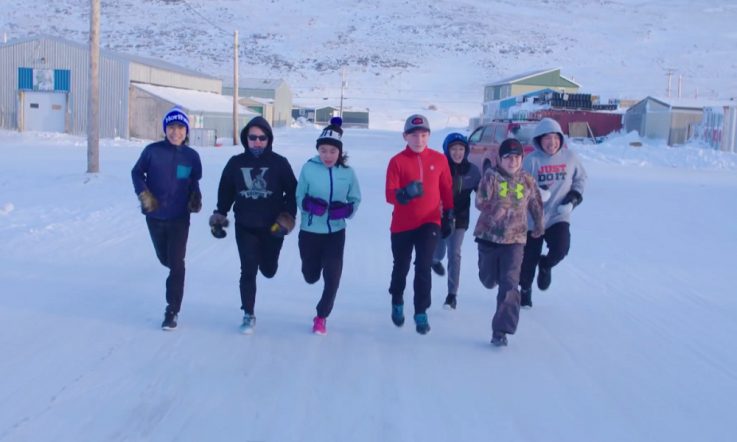Resilient children are those who do well during or after an adverse event, or a period of adversity.
Recently, beyondblue released a new practice guide to provide teachers and other professionals with a summary of major and latest resilience research.
The guide also identified helpful strategies for boosting resilience in children aged 0-12. It was based on a year-long research project led by the Parenting Research Centre (PRC) and Australian Research Alliance for Children and Youth (ARACY).
Alongside a review of resilience research, the guide gathered expert consensus on resilience and was complemented by consultations with parents, children, and practitioners around Australia.
Everyday and structured approaches to boosting children's resilience
An overview of findings and recommendations has been previously published in Teacher. In that article, two key approaches to boosting resilience were presented. The first approach is to build resilience in an everyday way, through the routine activities and interactions that occur in children's lives each day.
These include, improving relationships with children, scaffolding children to be more independent, helping children recognise and manage emotions better, and creating opportunities for personal challenge. These are things that educators, parents, carers, coaches and mentors can help children with in the ordinary course of life.
The second approach to boosting resilience is through more structured programs. Structured resilience interventions typically require intervention-specific training and are often accompanied by a guide or manual.
These resilience interventions are often delivered over a specific period of time. This article takes a closer look at these structured approaches to resilience by outlining what the focus of such programs can be, how to implement them, who the target can be, where such programs can take place, and the ideal time to do so.
What are structured resilience programs?
In identifying what can be a focus of structured resilience programs, it is important to clarify the main goals for such programs. Under each goal, specific strategies for educators (and families) can then be developed. Following are goals outlined in the beyondblue practice guide, as well as some indicative strategies for educators.
Goal 1: Introduce protective factors for children
Sample strategies:
- Improve children's communication and negotiation skills (e.g. solving problems, asking for and giving support)
- Strengthen children's ‘healthy mind habits' (e.g. positive self-talk, positive attitude)
Goal 2: Enhance existing protective factors for children
Sample strategies:
- Strengthen children's bonds to positive and competent adults (e.g. teachers)
- Help increase families' informal social networks (e.g. connections with school, community networks)
Goal 3: Provide resources and experiences that build children's resilience
Sample strategies:
- Increase the knowledge of children's teachers about how to promote children's resilience
- Increase the family's knowledge about how to promote children's autonomy (e.g. making decisions and choices)
Goal 4: Reduce risk factors among children
Sample strategies:
- Increase children's ability to effectively manage stress (e.g. self-awareness and coping skills)
- Increase children's sense of belonging and cultural connectedness (e.g. develop a sense of community at school, share cultural traditions and understanding)
Goal 5: Build the appropriate attributes in children
Sample strategies:
- Increase children's ability to problem solve (e.g. creative thinking, critical-thinking skills)
- Improve children's social skills (e.g. listening, showing empathy, and responding appropriately to others)
How are structured resilience programs delivered?
It is also useful to consider the range of delivery methods to boost children's resilience. These can include:
- Traditional educational approaches (e.g. lectures, homework activities)
- Therapeutic techniques and theories (e.g. mindfulness, cognitive reframing)
- Cognitive-behavioural therapy approaches
Within each of these approaches and techniques, educators can look to develop children's:
- Social skills and interpersonal relationships
- Problem solving and decision-making skills
- Stress management and relaxation responses
Who are they delivered to?
The practice guide is relatively unique in its focus on children under the age of 12 years (whereas much research and practice has often focused on adolescents). In outlining helpful approaches to building children's resilience, the guide identified children that are either particularly well placed for structured intervention programs or in particular need of these programs, including:
- School students or children in early childhood settings (i.e. universal programs)
- Vulnerable and at-risk children (e.g. homeless child/family, child of a parent with a mental health condition)
- Children with an existing mental health condition or behavioural issue
As is evident, these strategies are (quite appropriately) focused on children. Importantly, however, it is also a good idea to include activities that involve children's environments. Examples of school-based activities may include:
- Parent/carer information sessions about the intervention
- Encouraging parents/carers to replicate the messages from the intervention in the home
- Assigning home-based tasks, related to the intervention content, that children and parents/carers can do together
When should structured resilience programs be delivered?
Encouragingly, research suggests that building resilience can be achieved at any point in the child's life cycle. Resilience interventions can thus be helpful across the life cycle. However, it is well-established that early intervention is particularly effective in bringing about change; therefore, if an intervention can occur earlier in a child's life – or earlier in a school year or school term – that is ideal.
The guide also emphasises the importance of resilience interventions during transition periods – such as the transition from early childhood education to school, or primary school to high school. Also, programs that target children who are experiencing significant turning points in their lives (for example, grief or major changes in their parenting or living arrangements), are also worthwhile.
Where to deliver structured resilience programs?
Practitioners can be quite flexible in where to deliver structured resilience programs. In reality, any setting where practitioners work with children and families are viable for resilience intervention. These can include:
- Schools (and the classroom)
- Early childhood settings
- Out of school hours care
- General health practice and allied health settings
- Maternal and child health centres
- Child protection or out-of-home care settings
- Family support services
- Community settings where children are engaged (e.g. playgroups, sporting clubs, churches, Scouts and Girl Guides).
Some settings may be more conducive to successful resilience programs than others. For example, some sites may already have available resources for implementing a particular intervention, or they may allow a duration and frequency of contact with children and families that can make intervention more effective. For example, schools can be convenient and appropriately-resourced settings for delivering interventions.
Early childhood settings can also be effective sites as they offer children early opportunities to develop core skills and parents/carers tend to be quite closely connected with or involved in early childhood programs and centres.
What does this mean for students?
Children can learn to respond positively to adversity in their lives. Educators and families play an important part in that, including through structured resilience programs.
With good focus on the key factors and processes implicated in resilience and by leveraging appropriate sites (such as schools), methods, and points in a child's life, the outcomes of structured resilience interventions are likely to be optimised.
References
Beyond Blue (2017). Building resilience in children aged 0–12: A practice guide. Melbourne: beyondblue (https://www.beyondblue.org.au/who-does-it-affect/children/building-resilience-in-children-aged-0-12)
Vukovic, R. (2018). Strategies to help children build resilience. January, Teacher (https://www.teachermagazine.com/articles/strategies-to-help-children-build-resilience)
Professor Andrew Martin was a member of beyondblue's Children's Resilience Taskforce – comprising 10 child resilience experts – convened to oversee and guide the research and guide development.
Professor Martin says that some settings may be more conducive to successful resilience programs than others. Consider how you deliver your own resilience programs. Do you think about where they are delivered? How do you choose which setting to use? Are you mindful of the resources you have available?
He has also outlined five main goals for resilience programs. Consider each of them: are they something you’re trying to achieve in your own school setting? What steps are you taking to do so? What are some of your challenges?



